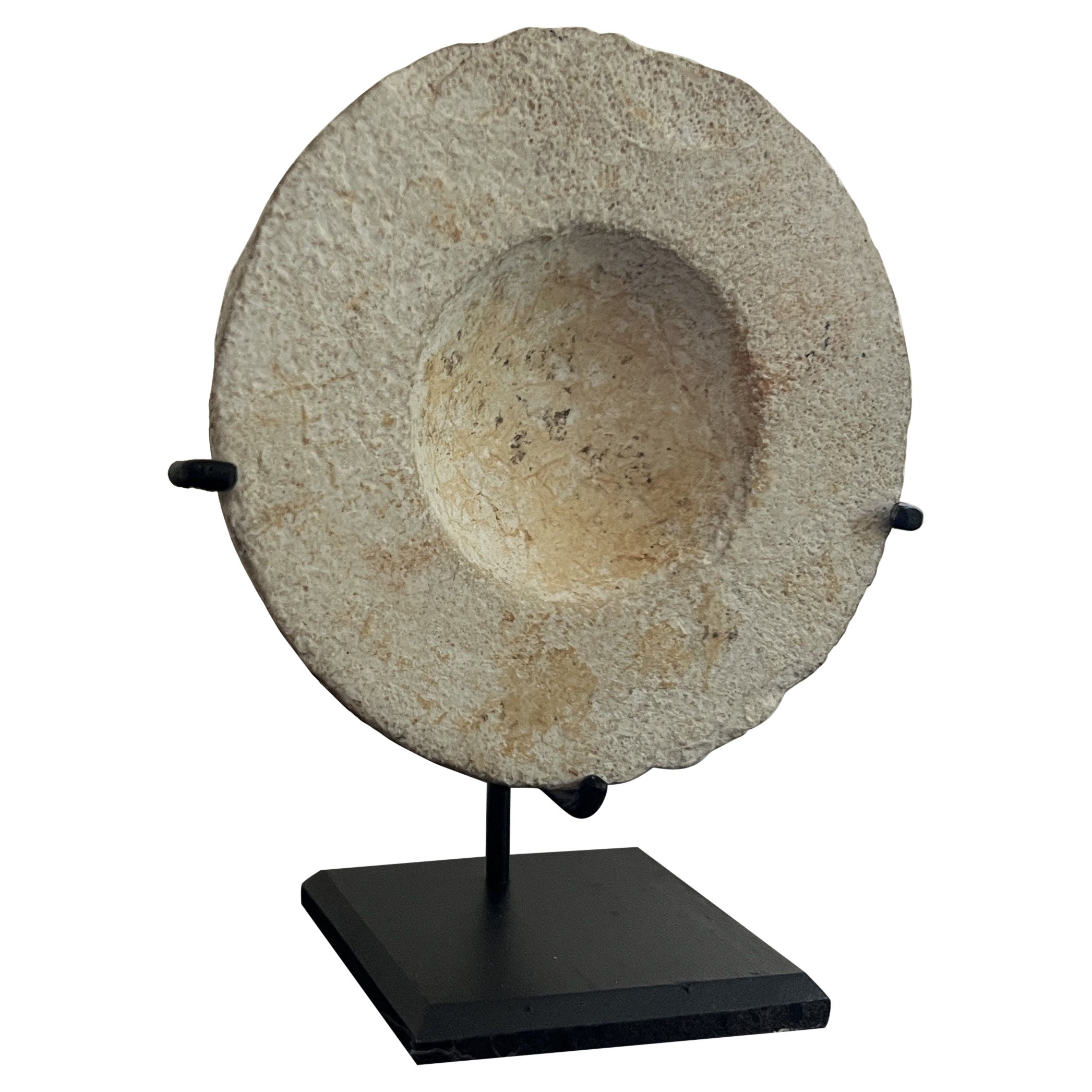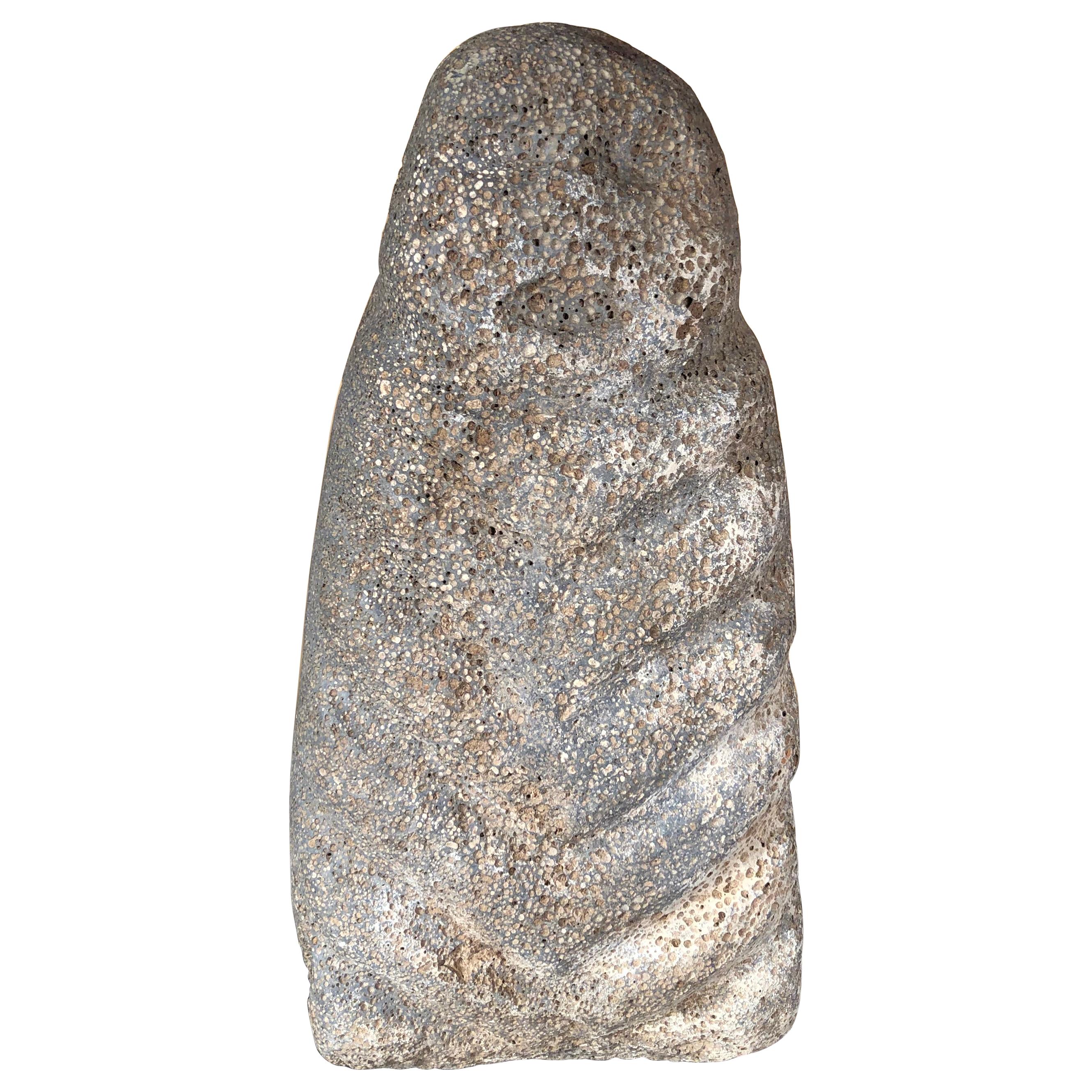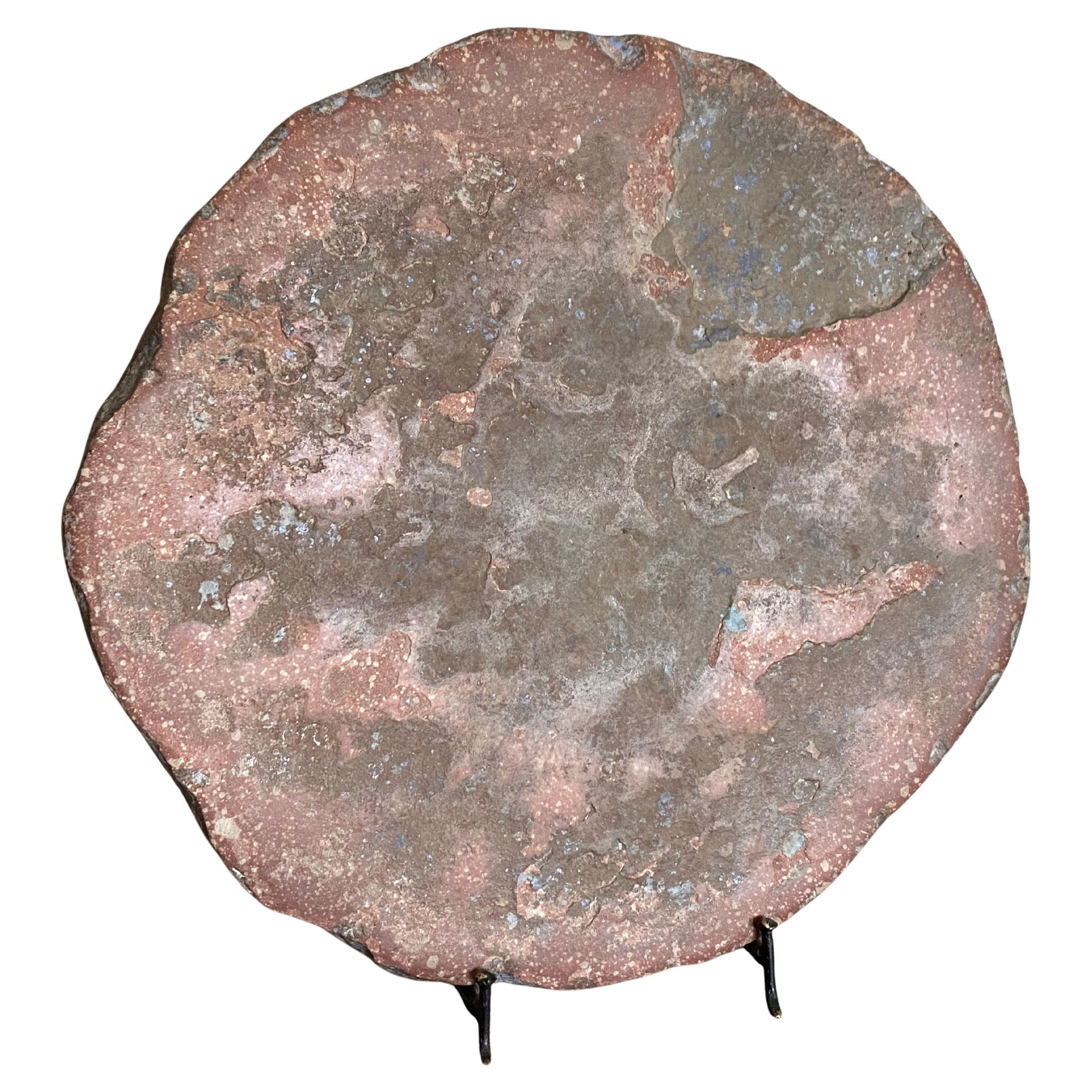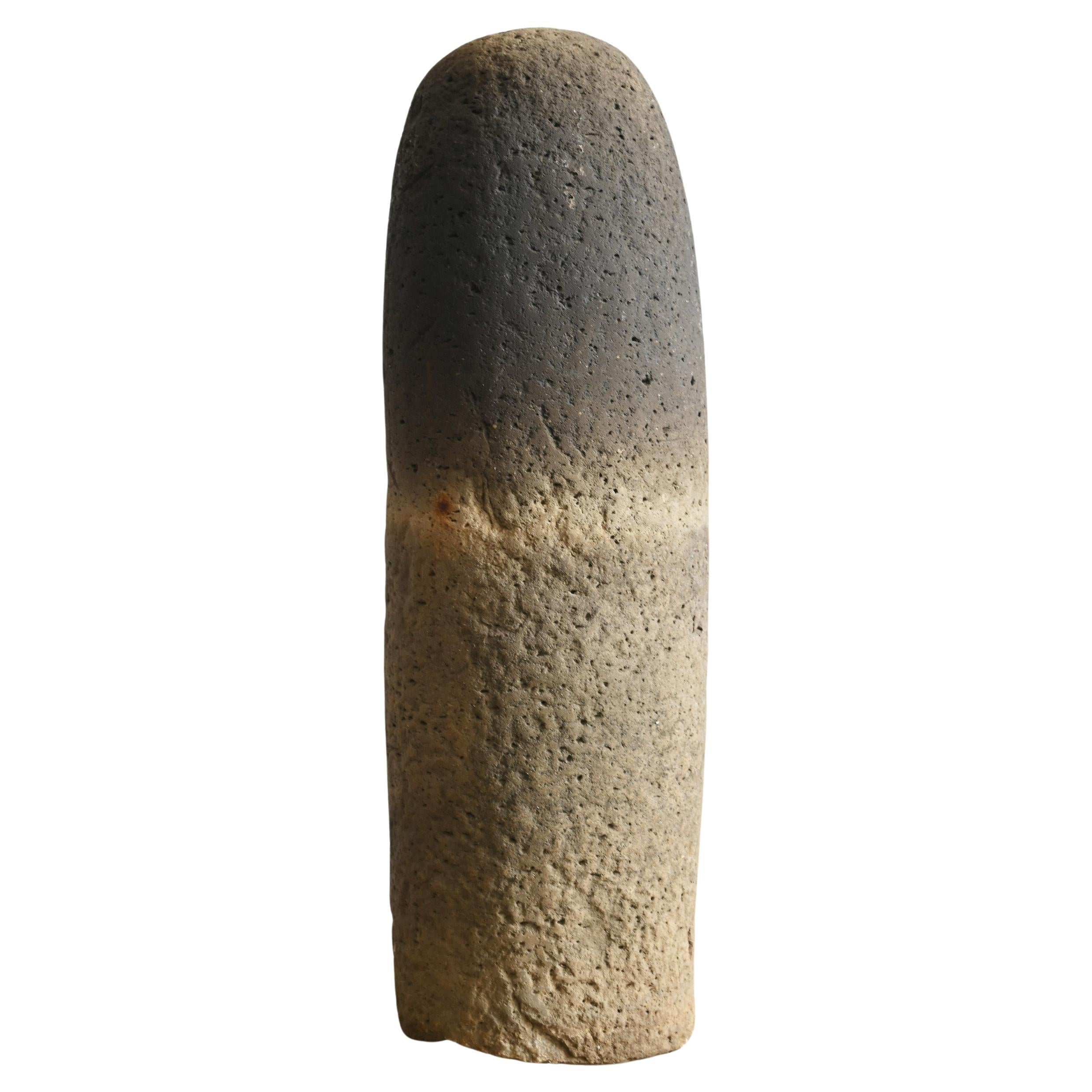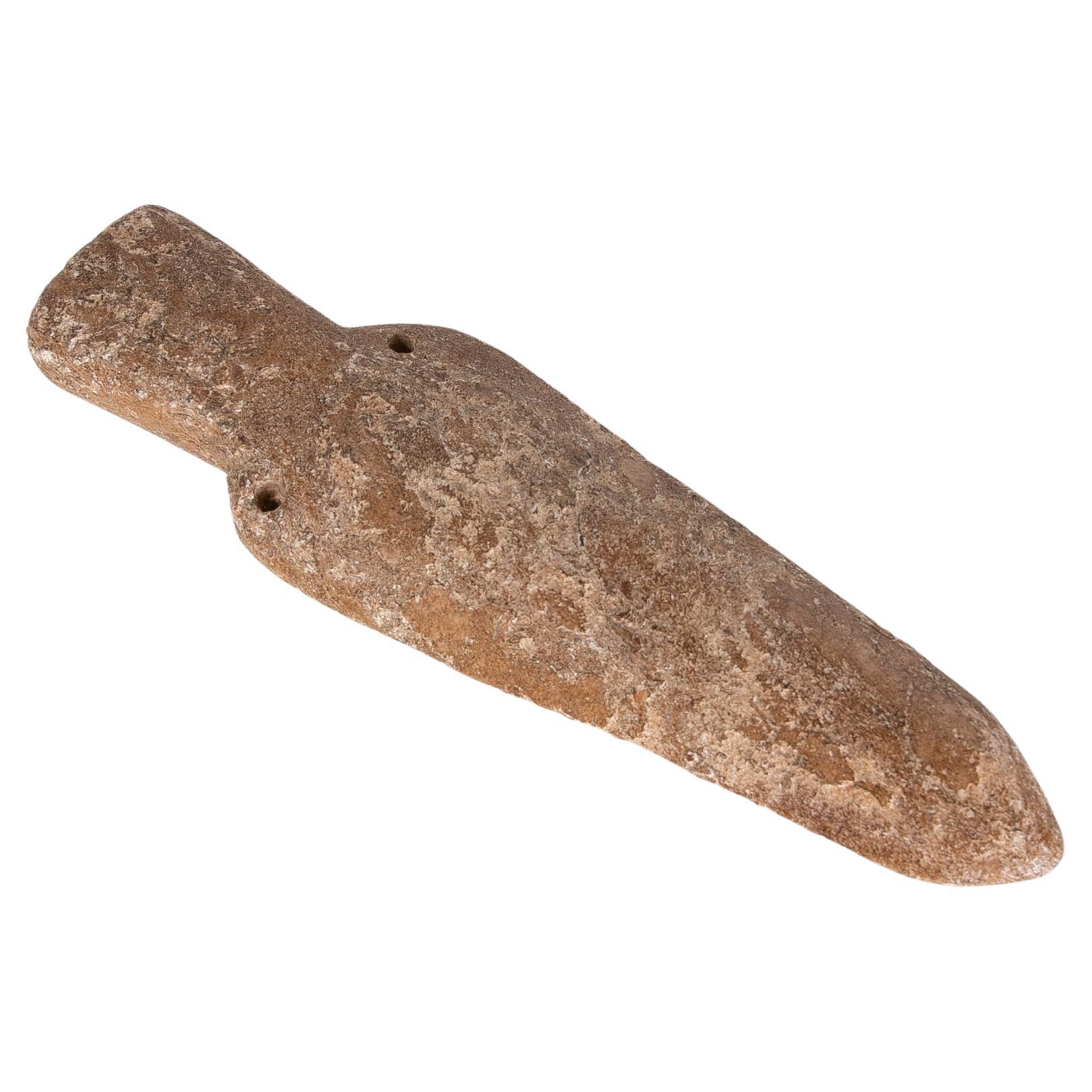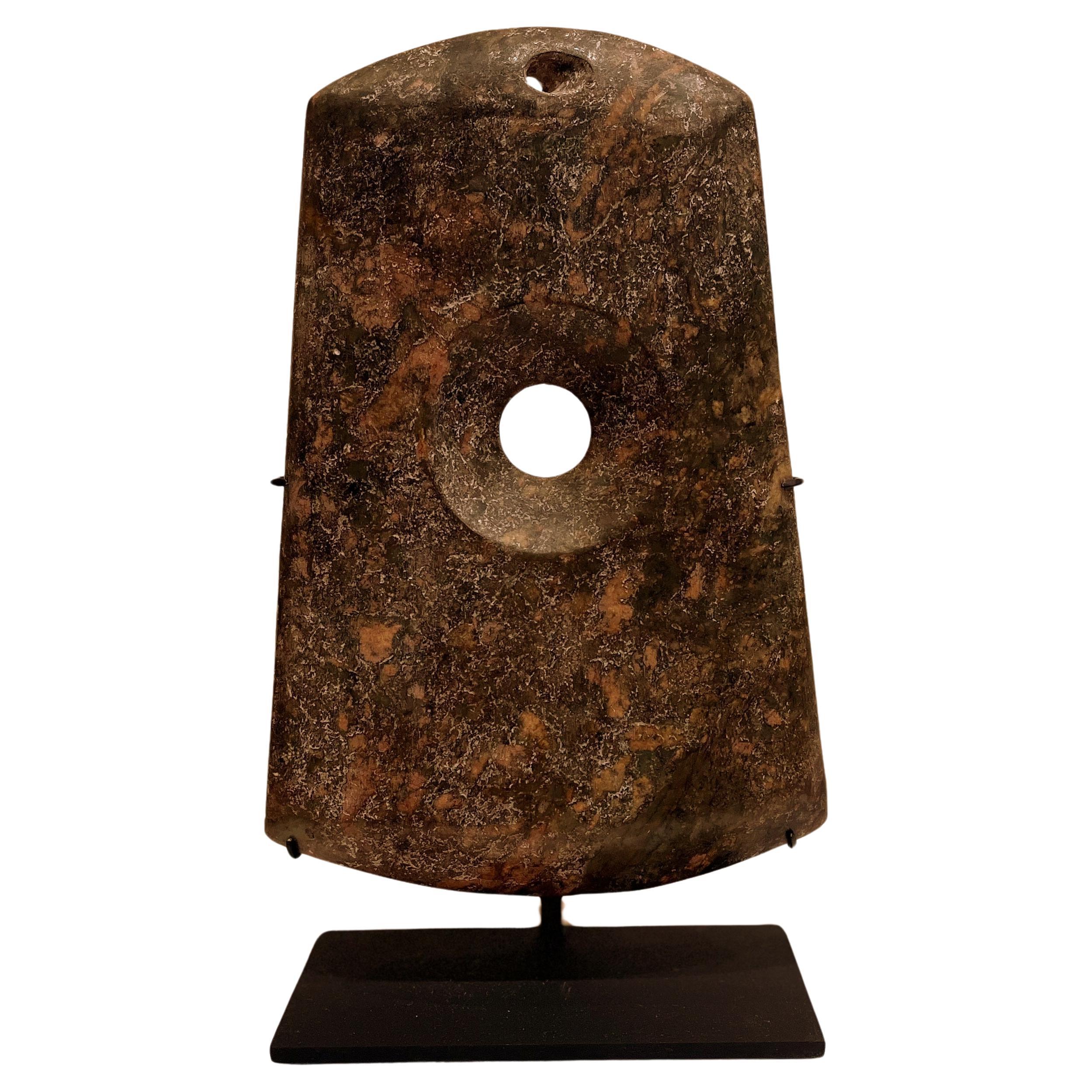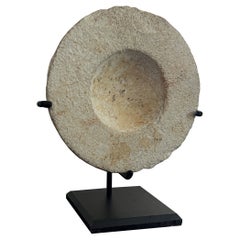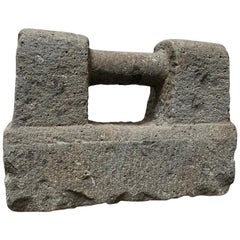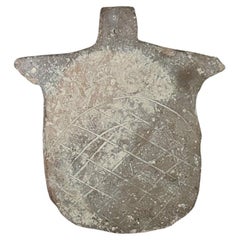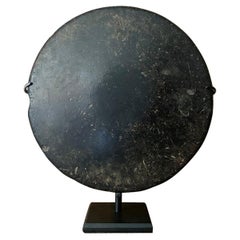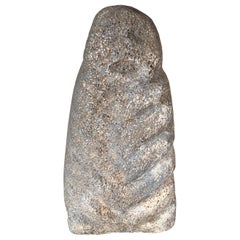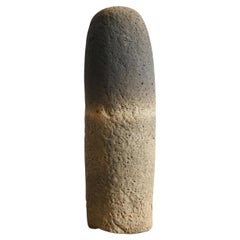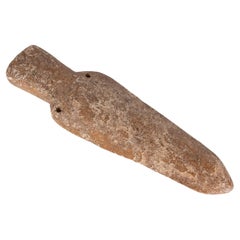Items Similar to bronze age ceremonial cup stone
Want more images or videos?
Request additional images or videos from the seller
1 of 13
bronze age ceremonial cup stone
$3,769.61
£2,800.19
€3,150
CA$5,200.45
A$5,716.72
CHF 3,004.45
MX$69,421.81
NOK 37,479.71
SEK 35,509.39
DKK 23,979.43
About the Item
This peculiar archeological piece is described as a 'cup stone'. These cup marked stones have been found worldwide and been dated from 300.000 bc up to 1000 bc. The exact purpose of these remain unknown but it is assumed the smaller, older singular cuptstone rocks were used as a small mortar. Larger examples as these have been found all over Europe but in a more spiritual context.
Usually they are found in the center of Menhir groups or places of worship. It is believed these large stones were altars where the cups in the stone catched the dew and rain as a gift from the gods/nature.
This particular piece is most likely a corner fragment of such a altar (see a simular example from Tanum, Denmark, Milstreu & Dodd, 2018, fig.8).
From a collection acquired on the UK art market from various auction houses and collections mostly before 2000. From an important Cambridgeshire estate; thence by descent.
See Glob, P. V., Helleristninger i Danmark Vol. VII, Jysk Arkæologisk Selskabs Skrifter, Odense, 1969; Milstreu, G.& Dodd, J., The cupmark: the smallest, most frequent, cosmopolitan and most complicated symbol in Adoranten, 2018.
- Dimensions:Height: 24.81 in (63 cm)Width: 15.75 in (40 cm)Depth: 11.82 in (30 cm)
- Style:Archaistic (Of the Period)
- Materials and Techniques:
- Place of Origin:
- Period:
- Date of Manufacture:1000 bc
- Condition:Wear consistent with age and use.
- Seller Location:Vosselaar, BE
- Reference Number:1stDibs: LU2023340301072
About the Seller
5.0
Vetted Professional Seller
Every seller passes strict standards for authenticity and reliability
Established in 1972
1stDibs seller since 2016
279 sales on 1stDibs
Typical response time: 7 hours
- ShippingRetrieving quote...Shipping from: Beerse, Belgium
- Return Policy
Authenticity Guarantee
In the unlikely event there’s an issue with an item’s authenticity, contact us within 1 year for a full refund. DetailsMoney-Back Guarantee
If your item is not as described, is damaged in transit, or does not arrive, contact us within 7 days for a full refund. Details24-Hour Cancellation
You have a 24-hour grace period in which to reconsider your purchase, with no questions asked.Vetted Professional Sellers
Our world-class sellers must adhere to strict standards for service and quality, maintaining the integrity of our listings.Price-Match Guarantee
If you find that a seller listed the same item for a lower price elsewhere, we’ll match it.Trusted Global Delivery
Our best-in-class carrier network provides specialized shipping options worldwide, including custom delivery.More From This Seller
View AllBronze age stone cup
Located in Vosselaar, BE
Ancient Near East, Holyland, Late Bronze Age, Deir Samit, Judea, ca. 1500 to 1250 BCE. A lovely limestone cosmetic dish presenting a hemispherical body with a flattened top and a dep...
Category
Antique 15th Century and Earlier Israeli Antiquities
Materials
Sandstone
$1,017
18th Century Chinese Stone Artefact
Located in Vosselaar, BE
This double sided hitching post was used to stall horses for short period of times. They are found throughout China and made during centuries. This hardstone example dates from the 1...
Category
Antique Early 18th Century Chinese Sculptures and Carvings
Materials
Stone
Anatolian Ceramic Idol, Early Bronze Age circa 2700-2400 BCE
Located in Vosselaar, BE
A interesting example of a kusura type bronze age idol. These are usually found in marble but this one is in ceramic. These idols represent a stylized female shape and represent fert...
Category
Antique 15th Century and Earlier Turkish Archaistic Antiquities
Materials
Ceramic
Early 20th Century Stone Disc
Located in Vosselaar, BE
A polished hardstone disc. Provenance unknown but probably a early 20th century Hawaiin Ulu Maika stoen. Ulu Maika is a ancient game simular to bowling played by the indigineaous Haw...
Category
Early 20th Century Hawaiian Mounted Objects
Materials
Stone
Bactrian Bronze Age Marble Column Idol
Located in Vosselaar, BE
Bactrian marble column idol, circa 3000-2000 BC. It has an elegant tapering form with a undeep groove running on the top. The colomn has incrustation on the side where it laid on the...
Category
Antique 15th Century and Earlier Afghan Archaistic Antiquities
Materials
Marble
Stone circular object primitif
Located in Vosselaar, BE
Interesting circular stone object. Most probably the lid of a stone mortar as examples found in south east Asia.
Mounted on a custom stand it has its own sculptural quality. Combine...
Category
Antique Early 19th Century Mounted Objects
Materials
Stone
You May Also Like
Chinese Ancient Hongshan Culture Stone Sculpture, 4700-2900 BC
Located in South Burlington, VT
China, a fine archaic human effigy hand-carved from a granular medium to dark gray volcanic stone with six (6) "V" sections carved front. Neolithic period, Hongshan culture...
Category
Antique 15th Century and Earlier Chinese Antiquities
Materials
Stone
$6,800 Sale Price
54% Off
Sculpted Tablet On Base
Located in Nijlen, BE
Sculpted natural stone tablet on base.
Beautiful on a custom tripod with an antique character.
A stone that has in its natural palette, shades of pink, blue and gray-brown. A true pa...
Category
Vintage 1940s French Minimalist Natural Specimens
Materials
Stone
$2,213
Japanese antique stone objects/rituals/Penis-shaped figurine/before the Edo
Located in Sammu-shi, Chiba
This is an old stone object from Japan, a sculptural piece called a “stone rod” that depicts male genitalia. Based on its shape, material, and discoloration, it is believed to have b...
Category
Antique 19th Century Japanese Other Abstract Sculptures
Materials
Stone
Oriental Style Hand Carved Stone
Located in Marbella, ES
Oriental Style Hand-Carved Stone.
Category
Mid-20th Century Asian Paperweights
Materials
Stone
Asian Hard Stone Axe Shape with Metal Stand
Located in Greenwich, CT
Asian Hard Stone Axe Shape with Metal Stand.
8" wide 3.5" depth. 13.5" height
Category
20th Century Chinese Sculptures and Carvings
Materials
Stone
Carved Stone Vase
Located in New York, NY
Sculptural vase carved by Canadian artist Michael Harvey from a single piece of natural stone. Its raw edges and chiseled form preserve the integrity of the material while the precis...
Category
Late 20th Century American Vases
Materials
Stone
More Ways To Browse
Bronze Cup
15th Century Stone Sculpture
Antique Bronze Cup
Large Mortar
Stone Cup
Ceremonial Cup
Stone Altar
Genuine American Fresh Water Snapping Turtle Shell
Giant Seashell
Mercury Gazing Ball
Mounting Snapping Turtle
Neolithic Axe
Seashell On Stand
Snapping Turtle Shell
Stone Axe Heads
Tiffany Plaque
Vintage Copper Flower Pots
Bi Disc On Stand
